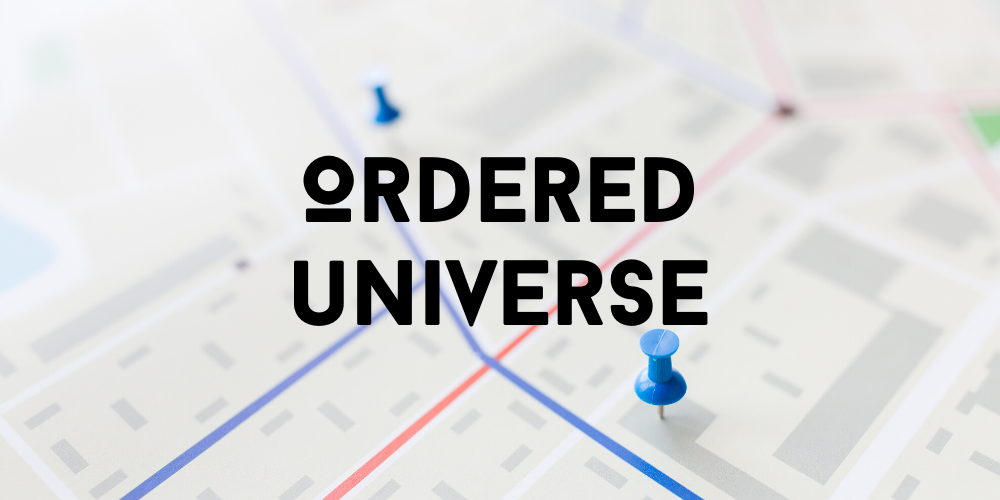QUESTIONS:
Does your city have a single overall plan? When was it made? Was indigenous settlement taken into consideration? How or how not?
_ _ _ _ _ _ _ _ _ _ _ _ _ _ _ _ _ _ _ _ _ _ _ _ _ _ _ _ _
DISCUSSION
Wellington was one of the New Zealand Company’s key settlement cities, along with New Plymouth and Nelson (Schrader 2015). Like many colonial cities and cities of the 19th century it was laid out in a grid plan, but there has been some debate as to who was responsible for this plan.
According to one of the widely held versions of how Wellington was planned, it all started when New Zealand Company surveyor Captain William Mein Smith arrived in 1839 with a completed city plan by Samuel Cobham of London (Montgomery 2014, 500). Smith’s application of Cobham’s “orderly and loftily conceived arrangement” of Wellington was met with a series of challenges on the ground (Montgomery 2014, 500). These included the actual landscape of the harbour where the settlement was to be built, with its limited flat lands surrounded by mountains; weather related issues, such as flooding; and conflict with a Captain William Wakefield of the New Zealand Company (Montgomery, 2014, 500). All of these factors, so the story goes, caused Smith to “vacillate between one end of the harbour and the other” with regards where to situate the settlement (Montgomery, 2014, 500). A critical flood at Smith’s preferred site in Petone forced the move of the settlement to the Thorndon/Te Aro area of the harbour and Cobham’s plan was forgotten in favour of a what Roy Montgomery describes as a “less symmetrical but rather tastefully rendered design” created by Smith himself, which was sent to London for approval and reproduced for marketing by the New Zealand Company (Montgomery, 2014, 500-501). According to this version of events, Wellington was less a planned city and more a series of accidents.
Illustration 1. Samuel Cobham’s proposed plan for Wellington. Image from The Encyclopedia of New Zealand
However, in his study of the various maps produced in the late 1830s through 1840s, Roy Montgomery finds that this sequence of events does not hold up. According to his study, Samuel Cobham played no significant role in the design of the city of Wellington, and nor did Smith (who was important to the surveying but was not responsible for designing the settlement plans). In fact, Montgomery claims, New Zealand Company employee Charles Heaphy was the one to outline the city’s initial plan (Montgomery, 2014, 500). Montgomery points out that Cobham did not travel to New Zealand at any time before the 1850s, and so he never would have been able to get a proper sense of the land he was supposedly designing for, nor did he have any direct connections to the New Zealand Company during the surveying and planning period between 1839 and 1842, although he was following and commenting on the Company’s activities (Montgomery, 2014, 501). Montgomery also points out that Cobham’s map lacks any serious topographical sophistication while seemingly doing more to demonstrate his ideal version of a city in general as opposed to practically taking into consideration the realities and needs of a new colony such as Wellington (Montgomery, 2014, 509-511). Furthermore, both Cobham’s and Smith’s maps betray the fact that they were drawn later as they are labeled as maps of ‘Wellington’ but are dated before that name had been selected for the settlement, as the designation was selected in May 1840, although both maps date themselves before then (Montgomery, 2014, 501-507). Montgomery points to Charles Heaphy’s map as being the more likely planning tool as it fits the timeline of events better and takes into account the findings of the survey of Wellington which was carried out in 1840, though this process was not without complications (Montgomery, 2014, 503-506). Nevertheless, in all likelihood Heaphy’s plan, though the most probable starting point for the actual town planning, was most likely added to or adapted by other surveyors during the early planning stages in Wellington, not least due to the continued environmental challenges they faced (Montgomery, 2014, 512-513). This reality is perhaps not unusual in a colony. Cobham’s plans have interest as an artefact of European conceptions of what colonial cities should be and as a possible tool of the New Zealand Company to increase investment in their venture of colonizing the country (Wilson, 2020). However, the fact remains that Wellington’s planning was not the creation of one person nor a series of happy accidents but rather a series of pragmatic ones following more traditional colonialist surveying and planning methods.
Illustration 2. William Mein Smith’s map of Wellington. Image from the National Library of New Zealand.
The New Zealand Company’s original plans were challenged by flooding in 1840 and were further challenged by a severe fire in 1842 and large-scale earthquakes in 1848 (McClean, 2014, 445-448). These presented challenges both in terms of what building materials to use and for what type of housing, but also in terms of layout of the city (McClean, 2014, 445-448). Following the 7.7 magnitude earthquake in 1848, a Board of Inquiry surveyed the damage to the settlement city and attempted to strategize, with one of their key recommendations being “greater separation between buildings” presumably to mitigate risk of domino-like collapses and the potential spread of fires (McClean, 2014, 448-449). That degree of separation diminished somewhat as the city’s population grew, and even in the 1840s a greater degree of the general public’s focus was on the integrity of structures and the materials being used in building than on density (McClean, 2014, 445-450).
Illustration 3. Aerial photo of Wellington (2007). Image from Auckland Daily Photo.
Whether the city followed Cobham, Smith or Heaphy’s plans, all plans for Wellington were grid plans, which were eventually executed in the late 1840s through 1850s by the New Zealand Company in the form of land packages (Schrader, 2015). Settlers would buy packages of 1 acre in town and 100 acres in the country, with towns being viewed as “speculative ventures” as the real money to be made was in the country through agriculture and farming (Schrader, 2010). The grid plans in New Zealand broadly, including Wellington’s, were challenged by the topography of the country but were largely executed (Schrader, 2015). Each town found ways of making the grid its own, with Wellington establishing a “town belt, a recreational reserve that circled the settlement” (Schrader, 2015). This feature can also be found in Christchurch and Dunedin, but the individual landscapes of these areas make each town belt unique and provide some interest apart from the cities’ grid layouts (Schrader, 2015).
Wellington’s plan is made even more unique as it also set aside 10% of all land in the settlement as Maori reserves, known as the Wellington Tenths, some of which remain (Schrader, 2015). Wellington City Council’s policies and laws concerning city development and building discusses this history in the second section titled “Issues for Tangata Whenua”, which presents the Maori history of Wellington prior to, during and after colonization. According to an agreement between the New Zealand Company and the local Maori in 1839, the “Company promised that when land was purchased, one-tenth of the territory ceded in every contract would be set aside as reserve to be held in trust for the benefit of the chief families of the tribe” (Wellington City Council, 2010, 13). Though the Tenths were created and held, they were soon found to be inadequate to meet Maori needs as they did not take into consideration the living requirements of the people (Wellington City Council, 2010, 13). The Tenths were scattered throughout the settlement and of “the nine pa (Maori villages/settlements that predated the arrival of colonizers, and were distinct sites from the allotted Tenths) in the Port Nicholson district, only three were reserved for Maori” including Pipitea Pa, Petone and Te Aro pa (Wellington City Council, 2010, 13). Occupants of Pipitea Pa were “only given 2.35% of the 1,500 acres traditionally claimed by them” and they did not consent to the sale of the rest of the land (Wellington City Council, 2010, 13). This approach appears in some ways to be a more integrative one between colonizers and indigenous peoples than was seen in the Laws of the Indies, as presented by Mundigo and Crouch,but the actual application of these land transfers and sales were often contested and inadequate in reality (Crouch & Mundigo, 1977). Furthermore, these seemingly integrated reserves did not last, as evidenced by the fact that Te Aro pa was uninhabited by 1902 and absorbed into the city of Wellington as it grew (Manning, 2014, 441).
Illustration 4. Waitangi stream after revitalization. Image from Wraight and Associates.
Wellington has been working to reintegrate some of these Maori locations in its modern plans as discussed in Manning’s paper which outlines how Wellington has been incorporating Maori history and presence into its urban design. This work is exemplified through such projects as that which has been carried out in Waitangi Park, where the Waitangi Stream (a vital feature of the Te Aro pa landscape with spiritual meaning) has been re-established and integrated into the park (Manning, 2014, 439-441). Also in Te Aro pa, in the 2005 construction for an apartment complex a “three ponga (silver fern) whare (houses)” of the pa were unearthed and the remains of the three whare have been incorporated into the apartment complex’s lobby (Manning, 2014, 439-441). The remains of the three whare were left in place in the ground, displayed through glass embedded in the floor (Manning, 2014, 441). These projects were undertaken with consideration and acknowledgement of the history and meaning of these sites for the Maori people of the area and, in the case of the three whare, in cooperation among Maori, heritage professionals, government, and private industry (Manning, 2014, 439-441). This integration of traditional land and landscape into the modern city, particularly the cooperative way in which it has been achieved in these cases, speaks to Wellington’s reckoning with its planning heritage and the failures of the original process to include the Maori people equitably.
Sources:
- Crouch, D. and A. Mundigo. (1977). The City Planning Ordinances of the Laws of the Indies Revisited. Part 1: Their Philosophy and Implications. The Town Planning Review. 48(3), 247-268.
- Manning, K. (2014). Indigenous Heritage in Cities: Representing Wellington’s Past. In M.G & E.P. (Eds.). Proceedings of the 12th Australasian Urban History Planning History Conference. (433-444). Australasian Urban History/Planning History Group and Victoria University of Wellington, Wellington, 2014.
- McClean, R. (2014). Making Wellington: Earthquakes, Survivors and Creating Heritage in the Town. In M.G & E.P. (Eds.). Proceedings of the 12th Australasian Urban History Planning History Conference. (445-462). Australasian Urban History/Planning History Group and Victoria University of Wellington, Wellington, 2014.
- Montgomery, R. (2014). Absolutely Positively Not the First Plan for Wellington: Unravelling Popular Misconceptions about the Process of Planning New Zealand’s Capital City. In M.G & E.P. (Eds.). Proceedings of the 12th Australasian Urban History Planning History Conference. (499-516). Australasian Urban History/Planning History Group and Victoria University of Wellington, Wellington, 2014.
- Schrader, B. (2015). City Planning. Te Ara – The Encyclopedia of New Zealand. Wellington, 2010. https://teara.govt.nz/en/city-planning/print
- Wellington City Council. (2010). Wellington City District Plan – Volume One: Objectives, Policies and Rules. https://wellington.govt.nz/your-council/plans-policies-and-bylaws/district-plan/district-plan-pdfs/volume-1
- Wilson, J. (2020). History – British sovereignty and settlement. Te Ara – The Encyclopedia of New Zealand.Wellington, 2010. https://teara.govt.nz/en/map/1457/plan-of-wellington-1840

